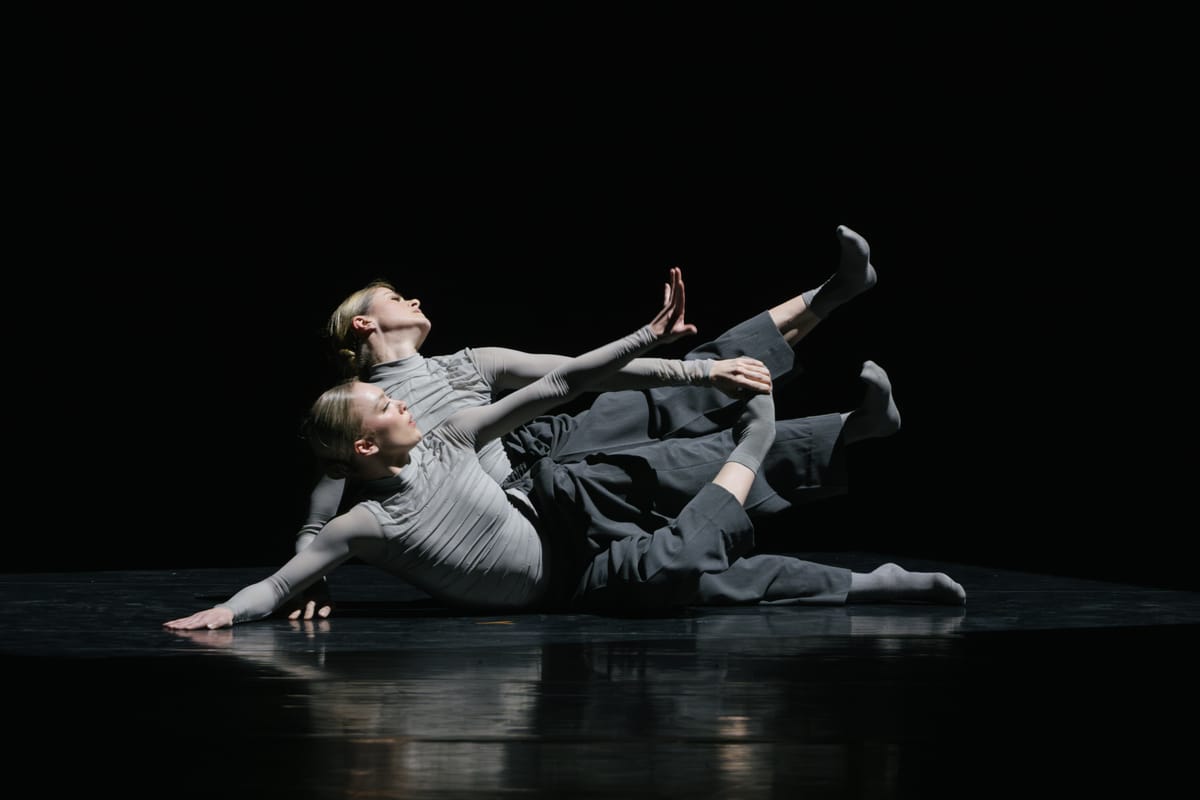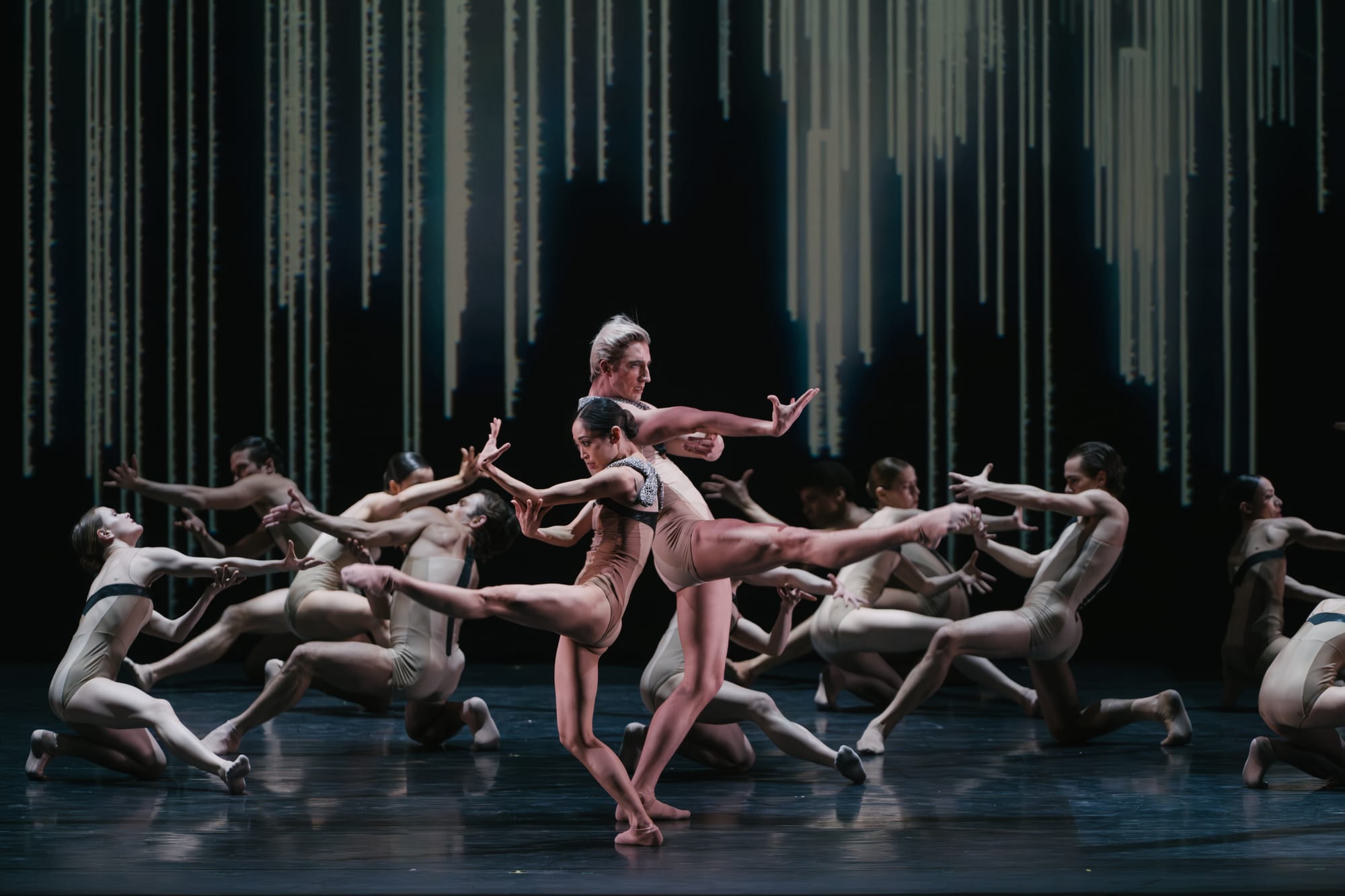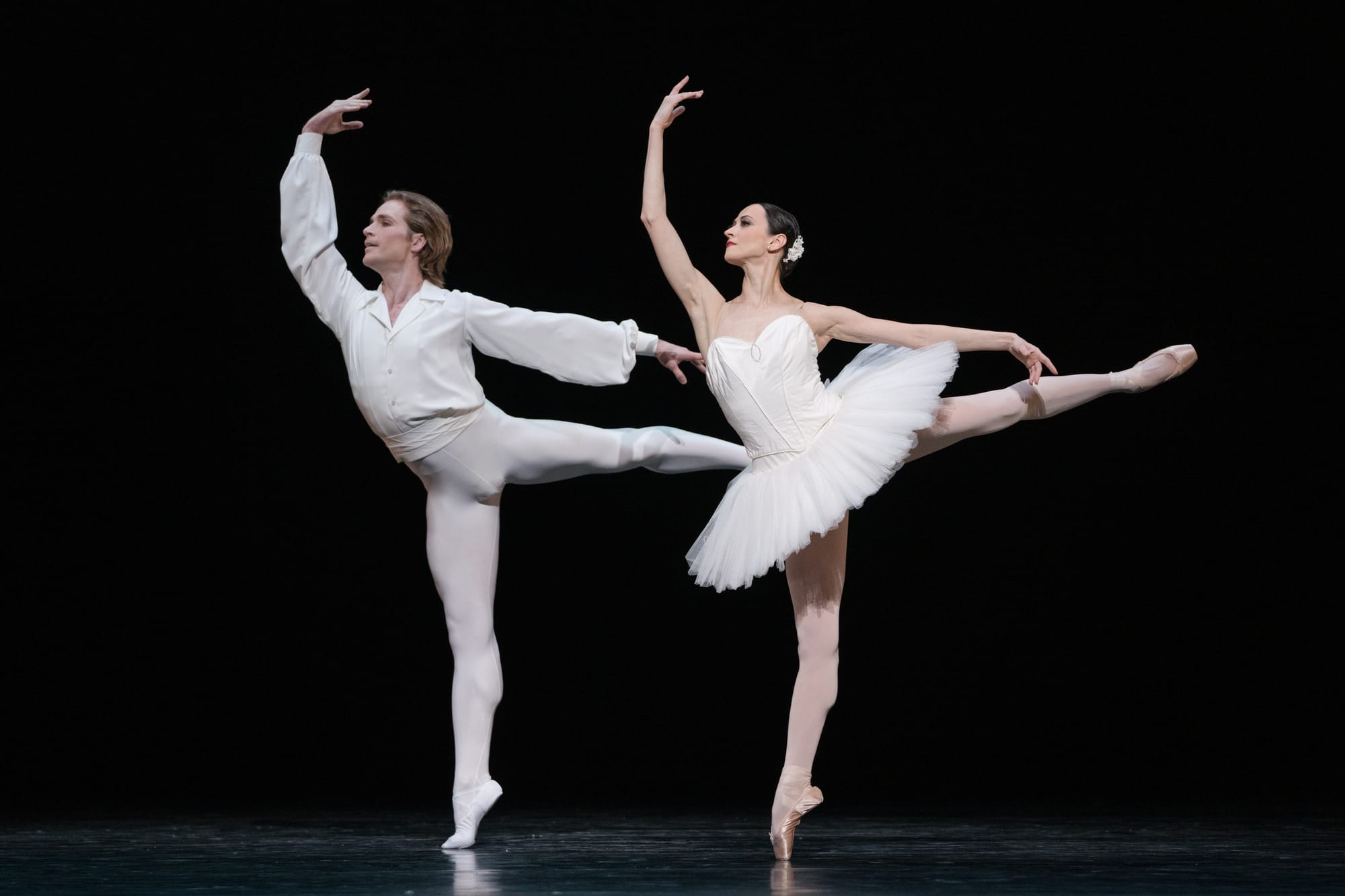A Trifecta of Premieres

"UtopiVerse", "islands", "Suite en Blanc"
The National Ballet of Canada
Four Seasons Centre for the Performing Arts
Toronto, Canada
March 20, 2024
The National Ballet of Canada’s winter triple bill featured three exciting premieres: a world premiere, a North American premiere and a Canadian premiere. Two of the ballets, “UtopiVerse” and "islands”, were in a contemporary style. In contrast, Serge Lifar’s 1943 showpiece “Suite en Blanc” provided the tutus, pointe shoes and classical bravura that many expect from a NBoC performance.
The program opened with “UtopiVerse”, a new work choreographed by Hong Kong-born, Toronto-based multihyphenate William Yong. Significantly, it is the first NBoC main stage commission by an Asian choreographer. Yong has collaborated on creative projects for dance, music, theatre and film and brings a fresh perspective to the company. Comfortable in multiple domains, he designed the sets and costumes and directed and edited the video projections. Yong is known to Toronto audiences from his career as a dancer with Toronto Dance Theatre, Peggy Baker Dance Projects and Canadian Stage. He has also choreographed several works for contemporary dance companies. In commissioning “UtopiVerse”, Hope Muir is helping bridge the gap between classical and contemporary dance.
Creating a piece of this scale and with the robust resources of the NBoC was likely a change from working with smaller companies and more intimate venues. Yong pulled out all the stops with a sweeping arrangement of music by Benjamin Britten, dramatic and elaborate sets and costumes (including metal head pieces) and stunning video content. The abstract work is inspired by John Milton’s “Paradise Lost” but applies it to the modern age of digital technology. It examines the human quest for a utopia of truth and meaning amidst temptations, vice and fake news. If that sounds like a lot to tackle in a 37 minute ballet, it is. While lofty in its ambitions, “UtopiVerse” never coalesces into anything coherent, although there certainly are moments of transient beauty in it.

There is a lot going on in this ballet. It opens with a video of a man holding a glass cube, which later reappears lit up and held in one of the dancer’s hands – a beacon of hope and truth, perhaps. Towards the end, many dancers hold tiny lights. It creates a striking image, like fireflies in the night. A large illuminated disc is a central component of the set. It shifts between different scenes as the dancers move between a timeless garden of Eden, a futuristic digital world and a blazing red inferno. The program refers to different characters including Lotus, Leo, The Daemon, The Undermined, The Heretics, The Defects and The Utopians. However, it is difficult to know the significance of and relationships between them. The synopsis is vague: “characters navigate an intricate web of perception and reality within a technological universe”. Costumes do not offer many clues.
As the Daemon, Christopher Gerty wears a large hat and looks like an explorer. Lotus and Leo (Koto Ishihara and Ben Rudisin) have a dreamy, suspended pas de deux. They seem like an archetypal couple, Adam and Eve, trying to lead society into the future. Initially in a nude bodysuit, Lotus later appears in an ethereal gown with a long train, holding the light/cube. Has she transcended original sin? It is honestly hard to tell. Earlier, we see six dancers (“The Defects”) with long dark wigs writhing against a red lit background. Although surely unintentional, the hairstyles look very much like African braids. The image of a scene suggesting hell filled with dancers with black hairstyles is problematic to say the least. Between utopia and inferno, we have a modern age where green digital numbers are projected over the dancers’ faces. Later, they move around with hands covering their faces, symbolic perhaps of identity theft or a loss of individuality.
The choreography itself has some interesting moments. The movement vocabulary is grounded with lots of deep pliés, running, undulation and floorwork. There are clear elements of contact improvisation. The dancers are connected at times – a movement initiated in one body continues fluidly into another. Rudisin stood out for his strong partnering skills, while Ishihara’s dancing had a soft, otherworldly quality. The video footage projected on the backdrop featured dancers Isabella Kinch and Matthieu Pages. It was beautiful but also quite distracting as it took away from watching the dancers on stage at the same time. Perhaps with some edits “UtopiVerse” could become something more lucid. The company is bringing it on tour to Paris in October 2024 as part of an all Canadian mixed program.
Next was the engaging duet, “islands”, by Canadian choreographer Emma Portner. Originally created for the Norwegian National Ballet, “islands” had its debut in 2020 right before pandemic lockdowns. Like Yong, Portner is also somewhat of an outsider from the classical ballet world. Prior to the creation of “islands”, she worked in contemporary and commercial dance and musical theatre with the likes of Justin Bieber and Netflix. With “islands”, she proves she has something to say that is relevant for ballet audiences. She challenges the gendered patterns and vocabulary of classical ballet. A work for two women (although in this run one cast included a female/male duo), Portner has referred to it as a “queer duet”, exploring a same sex relationship and bringing more visibility and representation of LGBTQ people to ballet.
The pair (a well-matched Heather Ogden and Emma Ouellet on opening night) begin on the floor, sharing a pair of pants with four legs. While classical tutus force female dancers to stand at a distance from one another, “islands” subverts that and does the opposite, fixing the women's hips together. The choreography is imaginative and intricate. The dancers become intertwined and at times their arms and legs become indistinguishable. They resemble Siamese twins or a multi-limbed Hindu deity. Later, the pants come off and they dance separately and side by side. The music is a mishmash of electronic, pop, indie rock and experimental styles that works well with the eclectic movements. Ogden and Ouellet threw themselves into Portner’s vision and brought a playful curiosity and tenderness to this unique work.

After these two experimental creations came “Suite en Blanc” which features many of the pancake tutus that “islands” rebels against. While it is important to keep pushing the boundaries of ballet and moving the art form forward, it is equally important to recognize its past. “Suite en Blanc”, appearing for the first time in Canada, does just that. It is an homage to pure, classical technique with no plot, elaborate costumes or gimmicks to hide behind. For a large classical company like the NBoC, it is important to stage works like this consistently to maintain a high standard of technical rigor. In Lifar’s fiendishly difficult choreography, some of the dancers struggled – falling off pointe during turns or showing effort on their faces. In the “Presto” section, Koto Ishihara demonstrated lovely sissones, crisp brisé-volés and échappés but had a few small bobbles. In “La Cigarette”, Calley Skalnik fared better. She was in full command of every movement – her legs strong as steel while her arms were soft and fluid. Spencer Hack gave a standout performance in the “Mazurka”, adding flourishes to the folk inspired steps, soaring in his assemblés and then ending with an effortless quadruple pirouette. In the “Adage” Svetlana Lunkina and Harrison James made their sweeping gestures serene and poetic. I overheard an audience member comment that Lunkina looked like a perfect “jewellery box ballerina” and she did. Together they were the quintessential regal leading couple.
copyright © 2024 by Denise Sum



